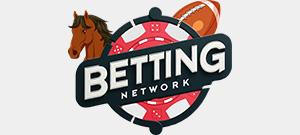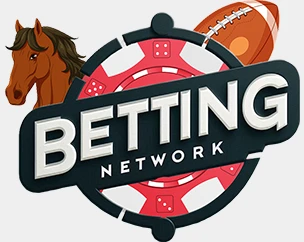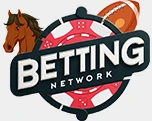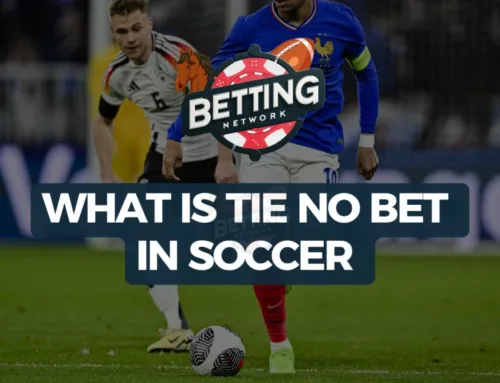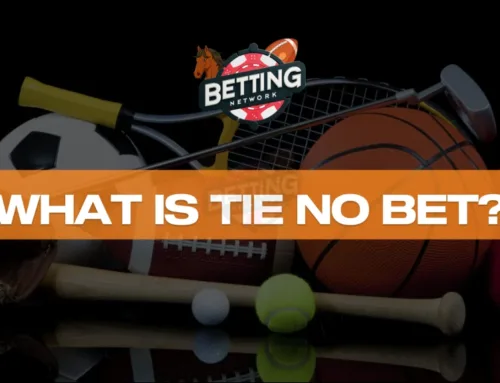Moneyline bets are by far the most popular, and easiest forms of bets. All you have to do is pick a winner for a game or event, and you’re golden!
Typically, gamblers pick moneyline bets when there’s an underdog that, in this specific event, has a good chance of winning.

This one is by far the most popular bet because of how simple it is, plus the payouts can be substantial if the underdog comes through. That being said, let’s go over how to bet moneyline the smart way!
How Moneyline Odds Work
Now that we understand what a moneyline bet is, it’s time to understand how moneyline odds work. Even if you’re not a math person, you’ll get it, trust me.
You can interpret positive and negative moneyline odds this way:
- Positive Moneyline odds tell you how much money you can win from a specific bet.
- Negative Moneyline odds tell you how much money you need to bet to win a certain amount.
My favorite way to explain things is with examples. So, let’s look at some.
Positive and Negative Moneyline Odds
Odds are expressed in positive and negative numbers. Here’s what it all means:
Positive Moneyline Odds: Represent the potential profit on a $100 bet. For example, +200 odds mean you can win $200 on a $100 bet. Typically, underdogs get positive odds since they’re least likely to win.
Negative Moneyline Odds: Indicate how much you need to bet to win $100. For instance, -150 odds mean you must bet $150 to win $100. Favorites tend to get negative odds since most people think they’ll win.
Example Scenarios of Moneyline Odds
Let’s say that Argentina is playing Canada in the Copa America, with Argentina as a clear favorite to win the game. Here are the odds:
- Argentina: -100
- Canada: +200
Argentina at -100: The negative sign shows they’re the favorite. To win $100, you need to bet $100. For a $50 bet, you’d win half of that since it’s proportionate. So, $50 wins you $50. If Argentina wins, you get your $50 back plus another $50, totaling $100.
Canada at +200: The positive sign means they’re the underdog. For every $100 bet, you win $200. For a $50 bet, you’d win half of that, which is $100. If Canada wins, you get your $50 back plus $100, totaling $150.
In short, you pick who you think will win. If your team wins, you get your initial bet back plus your winnings. Betting on favorites gives lower returns, while underdogs offer higher rewards if they win.
So, a few things are clear right from the get-go
#1 is that favorites are indicated by negative odds (e.g., -150). If you bet $150 on a favorite with these odds and they win, you would profit $100, plus get your initial $150 bet back.
#2 is that underdogs are represented by positive odds (e.g., +200). If you bet $100 on an underdog with +200 odds and they win, you would profit $200, plus get your initial $100 bet back.
So, how are these odds determined, and what factors influence them?
Moneyline Bet Odds Factors
Let’s go over some of the most influential factors behind how bookies and sportsbooks determine these odds.
All of these factors come into play when sportsbook and bookies calculate a wager’s odds. If you closely follow the event or sports you’re betting on, you’ll likely have access to information or insights that might escape the sportsbook watchful eye. That’s when you know you’re likely in for a big payday.

Calculating Payouts for Moneyline Bets
Now that we know how to read these odds, and some of the factors that influence them, let’s figure out how to calculate payouts for our moneyline bets.
Formula for Calculating Payouts
- Positive Odds: Profit = (Stake x Odds) / 100
- Negative Odds: Profit = (Stake / Odds) x 100
Examples of Payout Calculations
Positive Odds Example
For +200 odds, if you bet $100:
- Profit = (100 x 200) / 100 = $200
- Total Return = Profit + Stake = $200 + $100 = $300
Negative Odds Example
For -150 odds, if you bet $150:
- Profit = (150 / 150) x 100 = $100
- Total Return = Profit + Stake = $100 + $150 = $250
Positive Moneyline Odds: Represent the potential profit on a $100 bet. For example, +200 odds mean you can win $200 on a $100 bet.
Negative Moneyline Odds: Indicate how much you need to bet to win $100. For instance, -150 odds mean you must bet $150 to win $100.

How to Bet Moneyline: Strategies and Tips
Staying ahead of the rest requires dedication, but it’s also how you land those juicy payouts from moneyline bets. Here’s how you can do it:
Research and Analysis: You’ve no doubt heard this one before, but it’s for good reason: it works. Thorough research and analysis can significantly improve your chances of picking a winning team. Look out for:
Team/Player Performance: Analyze recent performance trends, including wins, losses, injuries, and any other relevant statistics.
Recent Team Performance: look out for wins, losses and any other relevant statistics that might point out to streaks or performance peaks/valleys.
Injuries: look out for key player injuries. Sometimes it doesn’t even have to be a striker, or forward that reliably scored for their team. Some players have an apparent secondary role that is actually critical to the team’s performance, and their absence usually results in a loss.
Historical Data: Review past matchups between the teams or players. Some teams seem to completely counter stronger teams for any number of reasons. Look out for these oddities!
Advanced Metrics: Utilize metrics like Player Efficiency Rating (PER), Expected Goals (xG), and others specific to the sport you’re betting on. There are tons of these tools nowadays, so you could go one step further and have an Excel sheet that tracks their success rate over time.
Betting Models: Consider using predictive models or algorithms that analyze vast amounts of data to forecast outcomes. Again, these are widely available online, so it wouldn’t hurt to incorporate them into your decision-making process if you’re serious about betting.

Common Mistakes to Avoid in Moneyline Betting

How Moneyline Bets Differ from Other Bet Types
Here are some of the most common bets out there, and how they compare to moneyline bets.
Spread Bets
Spread betting requires you to predict a winner, and the margin of said victory. The favorite must win by more than a set number of points (the spread), while the underdog can lose by less than the spread or win outright. This adds complexity compared to moneyline bets.
Key Differences:
- Moneyline: You’re just picking the winner. Simple and straightforward.
- Spread: You’re betting on the margin of victory. The favorite must win by a certain amount, and the underdog can lose by a certain amount or win outright.
Moneyline Bet vs Parlay Bet
Parlay bets are super popular nowadays, but how do they compare to moneyline bets?
A Parlay bet is more complex, but arguably more exciting. Think of it like a combo bet. Instead of betting on just one game, you bet on several games or outcomes at once.
For instance, you bet that Team A, Team B, and Team C will all win their respective games. To win a parlay, every single one of your bets needs to be correct. If even one team loses, you lose the entire bet, so it can be as rewarding as it is punishing. The stakes are way higher, but so are the rewards.
We’ve talked about parlay bets in greater detail before, but it’s obvious that moneyline bets are simpler to place and accurately predict. You only need to focus on one game and one outcome, and they’re perfect for anyone looking to learn how sports betting works. Once you’re comfortable and more knowledgeable, you can explore parlays for potentially bigger rewards.
Over/Under Bets
Over/under bets focus on the total points scored by both teams. Bettors wager on whether the total will be over or under a specified number. This bet type differs from moneyline bets, which are solely about choosing the winner.
Similar to spread betting, you’re adding an extra layer of complexity to your predictions. Unless you’re a veteran gambler, or seriously deep into your favorite sport’s analysis, you might want to skip these for now.
Some Final Words
Moneyline betting is a straightforward yet exciting way to engage in sports wagering. By understanding the fundamentals, calculating payouts accurately, and employing effective strategies, you can enhance your betting experience and increase your chances of winning. Remember to manage your bankroll wisely, avoid common mistakes, and continuously refine your approach based on research and analysis.
Moneyline bets are, by far, the most straightforward and exciting way for beginners to enter the gambling world. The odds are easy to understand, and they encourage gamblers to come up with superior insights for bigger payouts from day one.
Keep in mind that success requires patience, discipline, and ongoing learning. With the right knowledge, strategies and bankroll discipline, you’ll find yourself climbing through the ranks and delving into increasingly complex bets. Just remember, the good ole reliable moneyline bet will always be there for you when you want to keep things simple, yet exciting!
FAQs about How To Bet Moneyline
What does a +200 moneyline mean?
A +200 moneyline indicates that a $100 bet on the underdog would yield a $200 profit if they win. The total payout would be $300, including the initial $100 stake.
Can you lose money on a winning moneyline bet?
No, you cannot lose money on a winning moneyline bet. However, if the odds are very low, the profit may be minimal.
What sports are best for moneyline betting?
Moneyline betting is popular in various sports, including football, basketball, baseball, hockey, and mixed martial arts. Each sport offers unique opportunities and challenges, so choose the ones you are most knowledgeable about.
Moneyline bets are by far the most popular, and easiest forms of bets. All you have to do is pick a winner for a game or event, and you’re golden!
Typically, gamblers pick moneyline bets when there’s an underdog that, in this specific event, has a good chance of winning.

This one is by far the most popular bet because of how simple it is, plus the payouts can be substantial if the underdog comes through. That being said, let’s go over how to bet moneyline the smart way!
How Moneyline Odds Work
Now that we understand what a moneyline bet is, it’s time to understand how moneyline odds work. Even if you’re not a math person, you’ll get it, trust me.
You can interpret positive and negative moneyline odds this way:
- Positive Moneyline odds tell you how much money you can win from a specific bet.
- Negative Moneyline odds tell you how much money you need to bet to win a certain amount.
My favorite way to explain things is with examples. So, let’s look at some.
Positive and Negative Moneyline Odds
Odds are expressed in positive and negative numbers. Here’s what it all means:
Positive Moneyline Odds: Represent the potential profit on a $100 bet. For example, +200 odds mean you can win $200 on a $100 bet. Typically, underdogs get positive odds since they’re least likely to win.
Negative Moneyline Odds: Indicate how much you need to bet to win $100. For instance, -150 odds mean you must bet $150 to win $100. Favorites tend to get negative odds since most people think they’ll win.
Example Scenarios of Moneyline Odds
Let’s say that Argentina is playing Canada in the Copa America, with Argentina as a clear favorite to win the game. Here are the odds:
- Argentina: -100
- Canada: +200
Argentina at -100: The negative sign shows they’re the favorite. To win $100, you need to bet $100. For a $50 bet, you’d win half of that since it’s proportionate. So, $50 wins you $50. If Argentina wins, you get your $50 back plus another $50, totaling $100.
Canada at +200: The positive sign means they’re the underdog. For every $100 bet, you win $200. For a $50 bet, you’d win half of that, which is $100. If Canada wins, you get your $50 back plus $100, totaling $150.
In short, you pick who you think will win. If your team wins, you get your initial bet back plus your winnings. Betting on favorites gives lower returns, while underdogs offer higher rewards if they win.
So, a few things are clear right from the get-go
#1 is that favorites are indicated by negative odds (e.g., -150). If you bet $150 on a favorite with these odds and they win, you would profit $100, plus get your initial $150 bet back.
#2 is that underdogs are represented by positive odds (e.g., +200). If you bet $100 on an underdog with +200 odds and they win, you would profit $200, plus get your initial $100 bet back.
So, how are these odds determined, and what factors influence them?
Moneyline Bet Odds Factors
Let’s go over some of the most influential factors behind how bookies and sportsbooks determine these odds.
All of these factors come into play when sportsbook and bookies calculate a wager’s odds. If you closely follow the event or sports you’re betting on, you’ll likely have access to information or insights that might escape the sportsbook watchful eye. That’s when you know you’re likely in for a big payday.

Calculating Payouts for Moneyline Bets
Now that we know how to read these odds, and some of the factors that influence them, let’s figure out how to calculate payouts for our moneyline bets.
Formula for Calculating Payouts
- Positive Odds: Profit = (Stake x Odds) / 100
- Negative Odds: Profit = (Stake / Odds) x 100
Examples of Payout Calculations
Positive Odds Example
For +200 odds, if you bet $100:
- Profit = (100 x 200) / 100 = $200
- Total Return = Profit + Stake = $200 + $100 = $300
Negative Odds Example
For -150 odds, if you bet $150:
- Profit = (150 / 150) x 100 = $100
- Total Return = Profit + Stake = $100 + $150 = $250
Positive Moneyline Odds: Represent the potential profit on a $100 bet. For example, +200 odds mean you can win $200 on a $100 bet.
Negative Moneyline Odds: Indicate how much you need to bet to win $100. For instance, -150 odds mean you must bet $150 to win $100.

How to Bet Moneyline: Strategies and Tips
Staying ahead of the rest requires dedication, but it’s also how you land those juicy payouts from moneyline bets. Here’s how you can do it:
Research and Analysis: You’ve no doubt heard this one before, but it’s for good reason: it works. Thorough research and analysis can significantly improve your chances of picking a winning team. Look out for:
Team/Player Performance: Analyze recent performance trends, including wins, losses, injuries, and any other relevant statistics.
Recent Team Performance: look out for wins, losses and any other relevant statistics that might point out to streaks or performance peaks/valleys.
Injuries: look out for key player injuries. Sometimes it doesn’t even have to be a striker, or forward that reliably scored for their team. Some players have an apparent secondary role that is actually critical to the team’s performance, and their absence usually results in a loss.
Historical Data: Review past matchups between the teams or players. Some teams seem to completely counter stronger teams for any number of reasons. Look out for these oddities!
Advanced Metrics: Utilize metrics like Player Efficiency Rating (PER), Expected Goals (xG), and others specific to the sport you’re betting on. There are tons of these tools nowadays, so you could go one step further and have an Excel sheet that tracks their success rate over time.
Betting Models: Consider using predictive models or algorithms that analyze vast amounts of data to forecast outcomes. Again, these are widely available online, so it wouldn’t hurt to incorporate them into your decision-making process if you’re serious about betting.

Common Mistakes to Avoid in Moneyline Betting

How Moneyline Bets Differ from Other Bet Types
Here are some of the most common bets out there, and how they compare to moneyline bets.
Spread Bets
Spread betting requires you to predict a winner, and the margin of said victory. The favorite must win by more than a set number of points (the spread), while the underdog can lose by less than the spread or win outright. This adds complexity compared to moneyline bets.
Key Differences:
- Moneyline: You’re just picking the winner. Simple and straightforward.
- Spread: You’re betting on the margin of victory. The favorite must win by a certain amount, and the underdog can lose by a certain amount or win outright.
Moneyline Bet vs Parlay Bet
Parlay bets are super popular nowadays, but how do they compare to moneyline bets?
A Parlay bet is more complex, but arguably more exciting. Think of it like a combo bet. Instead of betting on just one game, you bet on several games or outcomes at once.
For instance, you bet that Team A, Team B, and Team C will all win their respective games. To win a parlay, every single one of your bets needs to be correct. If even one team loses, you lose the entire bet, so it can be as rewarding as it is punishing. The stakes are way higher, but so are the rewards.
We’ve talked about parlay bets in greater detail before, but it’s obvious that moneyline bets are simpler to place and accurately predict. You only need to focus on one game and one outcome, and they’re perfect for anyone looking to learn how sports betting works. Once you’re comfortable and more knowledgeable, you can explore parlays for potentially bigger rewards.
Over/Under Bets
Over/under bets focus on the total points scored by both teams. Bettors wager on whether the total will be over or under a specified number. This bet type differs from moneyline bets, which are solely about choosing the winner.
Similar to spread betting, you’re adding an extra layer of complexity to your predictions. Unless you’re a veteran gambler, or seriously deep into your favorite sport’s analysis, you might want to skip these for now.
Some Final Words
Moneyline betting is a straightforward yet exciting way to engage in sports wagering. By understanding the fundamentals, calculating payouts accurately, and employing effective strategies, you can enhance your betting experience and increase your chances of winning. Remember to manage your bankroll wisely, avoid common mistakes, and continuously refine your approach based on research and analysis.
Moneyline bets are, by far, the most straightforward and exciting way for beginners to enter the gambling world. The odds are easy to understand, and they encourage gamblers to come up with superior insights for bigger payouts from day one.
Keep in mind that success requires patience, discipline, and ongoing learning. With the right knowledge, strategies and bankroll discipline, you’ll find yourself climbing through the ranks and delving into increasingly complex bets. Just remember, the good ole reliable moneyline bet will always be there for you when you want to keep things simple, yet exciting!
FAQs about How To Bet Moneyline
What does a +200 moneyline mean?
A +200 moneyline indicates that a $100 bet on the underdog would yield a $200 profit if they win. The total payout would be $300, including the initial $100 stake.
Can you lose money on a winning moneyline bet?
No, you cannot lose money on a winning moneyline bet. However, if the odds are very low, the profit may be minimal.
What sports are best for moneyline betting?
Moneyline betting is popular in various sports, including football, basketball, baseball, hockey, and mixed martial arts. Each sport offers unique opportunities and challenges, so choose the ones you are most knowledgeable about.
Moneyline bets are by far the most popular, and easiest forms of bets. All you have to do is pick a winner for a game or event, and you’re golden!
Typically, gamblers pick moneyline bets when there’s an underdog that, in this specific event, has a good chance of winning.

This one is by far the most popular bet because of how simple it is, plus the payouts can be substantial if the underdog comes through. That being said, let’s go over how to bet moneyline the smart way!
How Moneyline Odds Work
Now that we understand what a moneyline bet is, it’s time to understand how moneyline odds work. Even if you’re not a math person, you’ll get it, trust me.
You can interpret positive and negative moneyline odds this way:
- Positive Moneyline odds tell you how much money you can win from a specific bet.
- Negative Moneyline odds tell you how much money you need to bet to win a certain amount.
My favorite way to explain things is with examples. So, let’s look at some.
Positive and Negative Moneyline Odds
Odds are expressed in positive and negative numbers. Here’s what it all means:
Positive Moneyline Odds: Represent the potential profit on a $100 bet. For example, +200 odds mean you can win $200 on a $100 bet. Typically, underdogs get positive odds since they’re least likely to win.
Negative Moneyline Odds: Indicate how much you need to bet to win $100. For instance, -150 odds mean you must bet $150 to win $100. Favorites tend to get negative odds since most people think they’ll win.
Example Scenarios of Moneyline Odds
Let’s say that Argentina is playing Canada in the Copa America, with Argentina as a clear favorite to win the game. Here are the odds:
- Argentina: -100
- Canada: +200
Argentina at -100: The negative sign shows they’re the favorite. To win $100, you need to bet $100. For a $50 bet, you’d win half of that since it’s proportionate. So, $50 wins you $50. If Argentina wins, you get your $50 back plus another $50, totaling $100.
Canada at +200: The positive sign means they’re the underdog. For every $100 bet, you win $200. For a $50 bet, you’d win half of that, which is $100. If Canada wins, you get your $50 back plus $100, totaling $150.
In short, you pick who you think will win. If your team wins, you get your initial bet back plus your winnings. Betting on favorites gives lower returns, while underdogs offer higher rewards if they win.
So, a few things are clear right from the get-go
#1 is that favorites are indicated by negative odds (e.g., -150). If you bet $150 on a favorite with these odds and they win, you would profit $100, plus get your initial $150 bet back.
#2 is that underdogs are represented by positive odds (e.g., +200). If you bet $100 on an underdog with +200 odds and they win, you would profit $200, plus get your initial $100 bet back.
So, how are these odds determined, and what factors influence them?
Moneyline Bet Odds Factors
Let’s go over some of the most influential factors behind how bookies and sportsbooks determine these odds.
All of these factors come into play when sportsbook and bookies calculate a wager’s odds. If you closely follow the event or sports you’re betting on, you’ll likely have access to information or insights that might escape the sportsbook watchful eye. That’s when you know you’re likely in for a big payday.

Calculating Payouts for Moneyline Bets
Now that we know how to read these odds, and some of the factors that influence them, let’s figure out how to calculate payouts for our moneyline bets.
Formula for Calculating Payouts
- Positive Odds: Profit = (Stake x Odds) / 100
- Negative Odds: Profit = (Stake / Odds) x 100
Examples of Payout Calculations
Positive Odds Example
For +200 odds, if you bet $100:
- Profit = (100 x 200) / 100 = $200
- Total Return = Profit + Stake = $200 + $100 = $300
Negative Odds Example
For -150 odds, if you bet $150:
- Profit = (150 / 150) x 100 = $100
- Total Return = Profit + Stake = $100 + $150 = $250
Positive Moneyline Odds: Represent the potential profit on a $100 bet. For example, +200 odds mean you can win $200 on a $100 bet.
Negative Moneyline Odds: Indicate how much you need to bet to win $100. For instance, -150 odds mean you must bet $150 to win $100.

How to Bet Moneyline: Strategies and Tips
Staying ahead of the rest requires dedication, but it’s also how you land those juicy payouts from moneyline bets. Here’s how you can do it:
Research and Analysis: You’ve no doubt heard this one before, but it’s for good reason: it works. Thorough research and analysis can significantly improve your chances of picking a winning team. Look out for:
Team/Player Performance: Analyze recent performance trends, including wins, losses, injuries, and any other relevant statistics.
Recent Team Performance: look out for wins, losses and any other relevant statistics that might point out to streaks or performance peaks/valleys.
Injuries: look out for key player injuries. Sometimes it doesn’t even have to be a striker, or forward that reliably scored for their team. Some players have an apparent secondary role that is actually critical to the team’s performance, and their absence usually results in a loss.
Historical Data: Review past matchups between the teams or players. Some teams seem to completely counter stronger teams for any number of reasons. Look out for these oddities!
Advanced Metrics: Utilize metrics like Player Efficiency Rating (PER), Expected Goals (xG), and others specific to the sport you’re betting on. There are tons of these tools nowadays, so you could go one step further and have an Excel sheet that tracks their success rate over time.
Betting Models: Consider using predictive models or algorithms that analyze vast amounts of data to forecast outcomes. Again, these are widely available online, so it wouldn’t hurt to incorporate them into your decision-making process if you’re serious about betting.

Common Mistakes to Avoid in Moneyline Betting

How Moneyline Bets Differ from Other Bet Types
Here are some of the most common bets out there, and how they compare to moneyline bets.
Spread Bets
Spread betting requires you to predict a winner, and the margin of said victory. The favorite must win by more than a set number of points (the spread), while the underdog can lose by less than the spread or win outright. This adds complexity compared to moneyline bets.
Key Differences:
- Moneyline: You’re just picking the winner. Simple and straightforward.
- Spread: You’re betting on the margin of victory. The favorite must win by a certain amount, and the underdog can lose by a certain amount or win outright.
Moneyline Bet vs Parlay Bet
Parlay bets are super popular nowadays, but how do they compare to moneyline bets?
A Parlay bet is more complex, but arguably more exciting. Think of it like a combo bet. Instead of betting on just one game, you bet on several games or outcomes at once.
For instance, you bet that Team A, Team B, and Team C will all win their respective games. To win a parlay, every single one of your bets needs to be correct. If even one team loses, you lose the entire bet, so it can be as rewarding as it is punishing. The stakes are way higher, but so are the rewards.
We’ve talked about parlay bets in greater detail before, but it’s obvious that moneyline bets are simpler to place and accurately predict. You only need to focus on one game and one outcome, and they’re perfect for anyone looking to learn how sports betting works. Once you’re comfortable and more knowledgeable, you can explore parlays for potentially bigger rewards.
Over/Under Bets
Over/under bets focus on the total points scored by both teams. Bettors wager on whether the total will be over or under a specified number. This bet type differs from moneyline bets, which are solely about choosing the winner.
Similar to spread betting, you’re adding an extra layer of complexity to your predictions. Unless you’re a veteran gambler, or seriously deep into your favorite sport’s analysis, you might want to skip these for now.
Some Final Words
Moneyline betting is a straightforward yet exciting way to engage in sports wagering. By understanding the fundamentals, calculating payouts accurately, and employing effective strategies, you can enhance your betting experience and increase your chances of winning. Remember to manage your bankroll wisely, avoid common mistakes, and continuously refine your approach based on research and analysis.
Moneyline bets are, by far, the most straightforward and exciting way for beginners to enter the gambling world. The odds are easy to understand, and they encourage gamblers to come up with superior insights for bigger payouts from day one.
Keep in mind that success requires patience, discipline, and ongoing learning. With the right knowledge, strategies and bankroll discipline, you’ll find yourself climbing through the ranks and delving into increasingly complex bets. Just remember, the good ole reliable moneyline bet will always be there for you when you want to keep things simple, yet exciting!
FAQs about How To Bet Moneyline
What does a +200 moneyline mean?
A +200 moneyline indicates that a $100 bet on the underdog would yield a $200 profit if they win. The total payout would be $300, including the initial $100 stake.
Can you lose money on a winning moneyline bet?
No, you cannot lose money on a winning moneyline bet. However, if the odds are very low, the profit may be minimal.
What sports are best for moneyline betting?
Moneyline betting is popular in various sports, including football, basketball, baseball, hockey, and mixed martial arts. Each sport offers unique opportunities and challenges, so choose the ones you are most knowledgeable about.
Moneyline bets are by far the most popular, and easiest forms of bets. All you have to do is pick a winner for a game or event, and you’re golden!
Typically, gamblers pick moneyline bets when there’s an underdog that, in this specific event, has a good chance of winning.

This one is by far the most popular bet because of how simple it is, plus the payouts can be substantial if the underdog comes through. That being said, let’s go over how to bet moneyline the smart way!
How Moneyline Odds Work
Now that we understand what a moneyline bet is, it’s time to understand how moneyline odds work. Even if you’re not a math person, you’ll get it, trust me.
You can interpret positive and negative moneyline odds this way:
- Positive Moneyline odds tell you how much money you can win from a specific bet.
- Negative Moneyline odds tell you how much money you need to bet to win a certain amount.
My favorite way to explain things is with examples. So, let’s look at some.
Positive and Negative Moneyline Odds
Odds are expressed in positive and negative numbers. Here’s what it all means:
Positive Moneyline Odds: Represent the potential profit on a $100 bet. For example, +200 odds mean you can win $200 on a $100 bet. Typically, underdogs get positive odds since they’re least likely to win.
Negative Moneyline Odds: Indicate how much you need to bet to win $100. For instance, -150 odds mean you must bet $150 to win $100. Favorites tend to get negative odds since most people think they’ll win.
Example Scenarios of Moneyline Odds
Let’s say that Argentina is playing Canada in the Copa America, with Argentina as a clear favorite to win the game. Here are the odds:
- Argentina: -100
- Canada: +200
Argentina at -100: The negative sign shows they’re the favorite. To win $100, you need to bet $100. For a $50 bet, you’d win half of that since it’s proportionate. So, $50 wins you $50. If Argentina wins, you get your $50 back plus another $50, totaling $100.
Canada at +200: The positive sign means they’re the underdog. For every $100 bet, you win $200. For a $50 bet, you’d win half of that, which is $100. If Canada wins, you get your $50 back plus $100, totaling $150.
In short, you pick who you think will win. If your team wins, you get your initial bet back plus your winnings. Betting on favorites gives lower returns, while underdogs offer higher rewards if they win.
So, a few things are clear right from the get-go
#1 is that favorites are indicated by negative odds (e.g., -150). If you bet $150 on a favorite with these odds and they win, you would profit $100, plus get your initial $150 bet back.
#2 is that underdogs are represented by positive odds (e.g., +200). If you bet $100 on an underdog with +200 odds and they win, you would profit $200, plus get your initial $100 bet back.
So, how are these odds determined, and what factors influence them?
Moneyline Bet Odds Factors
Let’s go over some of the most influential factors behind how bookies and sportsbooks determine these odds.
All of these factors come into play when sportsbook and bookies calculate a wager’s odds. If you closely follow the event or sports you’re betting on, you’ll likely have access to information or insights that might escape the sportsbook watchful eye. That’s when you know you’re likely in for a big payday.

Calculating Payouts for Moneyline Bets
Now that we know how to read these odds, and some of the factors that influence them, let’s figure out how to calculate payouts for our moneyline bets.
Formula for Calculating Payouts
- Positive Odds: Profit = (Stake x Odds) / 100
- Negative Odds: Profit = (Stake / Odds) x 100
Examples of Payout Calculations
Positive Odds Example
For +200 odds, if you bet $100:
- Profit = (100 x 200) / 100 = $200
- Total Return = Profit + Stake = $200 + $100 = $300
Negative Odds Example
For -150 odds, if you bet $150:
- Profit = (150 / 150) x 100 = $100
- Total Return = Profit + Stake = $100 + $150 = $250
Positive Moneyline Odds: Represent the potential profit on a $100 bet. For example, +200 odds mean you can win $200 on a $100 bet.
Negative Moneyline Odds: Indicate how much you need to bet to win $100. For instance, -150 odds mean you must bet $150 to win $100.

How to Bet Moneyline: Strategies and Tips
Staying ahead of the rest requires dedication, but it’s also how you land those juicy payouts from moneyline bets. Here’s how you can do it:
Research and Analysis: You’ve no doubt heard this one before, but it’s for good reason: it works. Thorough research and analysis can significantly improve your chances of picking a winning team. Look out for:
Team/Player Performance: Analyze recent performance trends, including wins, losses, injuries, and any other relevant statistics.
Recent Team Performance: look out for wins, losses and any other relevant statistics that might point out to streaks or performance peaks/valleys.
Injuries: look out for key player injuries. Sometimes it doesn’t even have to be a striker, or forward that reliably scored for their team. Some players have an apparent secondary role that is actually critical to the team’s performance, and their absence usually results in a loss.
Historical Data: Review past matchups between the teams or players. Some teams seem to completely counter stronger teams for any number of reasons. Look out for these oddities!
Advanced Metrics: Utilize metrics like Player Efficiency Rating (PER), Expected Goals (xG), and others specific to the sport you’re betting on. There are tons of these tools nowadays, so you could go one step further and have an Excel sheet that tracks their success rate over time.
Betting Models: Consider using predictive models or algorithms that analyze vast amounts of data to forecast outcomes. Again, these are widely available online, so it wouldn’t hurt to incorporate them into your decision-making process if you’re serious about betting.

Common Mistakes to Avoid in Moneyline Betting

How Moneyline Bets Differ from Other Bet Types
Here are some of the most common bets out there, and how they compare to moneyline bets.
Spread Bets
Spread betting requires you to predict a winner, and the margin of said victory. The favorite must win by more than a set number of points (the spread), while the underdog can lose by less than the spread or win outright. This adds complexity compared to moneyline bets.
Key Differences:
- Moneyline: You’re just picking the winner. Simple and straightforward.
- Spread: You’re betting on the margin of victory. The favorite must win by a certain amount, and the underdog can lose by a certain amount or win outright.
Moneyline Bet vs Parlay Bet
Parlay bets are super popular nowadays, but how do they compare to moneyline bets?
A Parlay bet is more complex, but arguably more exciting. Think of it like a combo bet. Instead of betting on just one game, you bet on several games or outcomes at once.
For instance, you bet that Team A, Team B, and Team C will all win their respective games. To win a parlay, every single one of your bets needs to be correct. If even one team loses, you lose the entire bet, so it can be as rewarding as it is punishing. The stakes are way higher, but so are the rewards.
We’ve talked about parlay bets in greater detail before, but it’s obvious that moneyline bets are simpler to place and accurately predict. You only need to focus on one game and one outcome, and they’re perfect for anyone looking to learn how sports betting works. Once you’re comfortable and more knowledgeable, you can explore parlays for potentially bigger rewards.
Over/Under Bets
Over/under bets focus on the total points scored by both teams. Bettors wager on whether the total will be over or under a specified number. This bet type differs from moneyline bets, which are solely about choosing the winner.
Similar to spread betting, you’re adding an extra layer of complexity to your predictions. Unless you’re a veteran gambler, or seriously deep into your favorite sport’s analysis, you might want to skip these for now.
Some Final Words
Moneyline betting is a straightforward yet exciting way to engage in sports wagering. By understanding the fundamentals, calculating payouts accurately, and employing effective strategies, you can enhance your betting experience and increase your chances of winning. Remember to manage your bankroll wisely, avoid common mistakes, and continuously refine your approach based on research and analysis.
Moneyline bets are, by far, the most straightforward and exciting way for beginners to enter the gambling world. The odds are easy to understand, and they encourage gamblers to come up with superior insights for bigger payouts from day one.
Keep in mind that success requires patience, discipline, and ongoing learning. With the right knowledge, strategies and bankroll discipline, you’ll find yourself climbing through the ranks and delving into increasingly complex bets. Just remember, the good ole reliable moneyline bet will always be there for you when you want to keep things simple, yet exciting!
FAQs about How To Bet Moneyline
What does a +200 moneyline mean?
A +200 moneyline indicates that a $100 bet on the underdog would yield a $200 profit if they win. The total payout would be $300, including the initial $100 stake.
Can you lose money on a winning moneyline bet?
No, you cannot lose money on a winning moneyline bet. However, if the odds are very low, the profit may be minimal.
What sports are best for moneyline betting?
Moneyline betting is popular in various sports, including football, basketball, baseball, hockey, and mixed martial arts. Each sport offers unique opportunities and challenges, so choose the ones you are most knowledgeable about.
